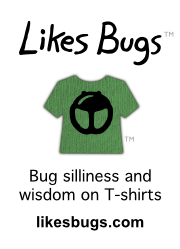Mike Quinn and I agreed to meet at Lake Tawakoni State Park on the morning of Friday, August 31st. I hit the trail early, and good thing too, because when Mike arrived so would a mob of journalists and camera crews.
As I walked the path I eventually noticed isolated long-jawed orbweavers (family Tetragnathidae) sitting in little tangle webs. They quickly became more and more common, until the tangle web seemed everywhere.
Unfortunately, I didn’t see the “white fairyland” shown in all the photos. I kept looking for the fairyland, but the fairyland was gone. As I had been fore-warned, storms had knocked down much of the web earlier in the week.
The place may not have looked impressive to the casual observer, but I was in heaven. Focus your eyes on nearly any bit of vegetation and you would find spider web and spiders. Their bodies were probably 3/4 an inch long, and they had leg-spans of 2 to 2.5 inches. They were everywhere on everything but the ground. And if one did drop down to you, you could almost hear it scream “Eeek!” as it climbed back up to get away.
Perhaps the most fascinating thing was the ecology at play in the web. There were the long-jawed orbweavers, of course, but there were also many other kinds of spiders. Regular orbweavers (family Araneidae) were also abundant, as were funnel spiders and jumping spiders. The jumping spiders were busy hunting long-jawed orbweavers, and I saw several working on long-jawed orbweaver meals. I saw what were probably the biggest Bold Jumper jumping spiders I’ve ever seen, obviously well fed on long-jawed orbweavers.
Interestingly, the jumping spiders were walking across the webs. The webs were old and dirty and so not likely very sticky any more. The jumping spiders were happy for the easy access to their meals.
Wasps were also hunting for long-jawed orbweavers to pluck out of the webs. I never actually saw one take a long-jawed, but I knew what they were up to. They would sting the spider and take the paralyzed spider back to the nest they were making for their young (larvae). The wasp larvae would feed on the spiders as they grew.
Thread-legged bugs were also extremely common in the web, but I hardly saw any on any subsequent visit. They look like very thin walking sticks, but they’re actually more related to stink bugs, shield bugs, and assassin bugs. They’re frequently found walking on spider webs looking for uneaten or unfinished prey to steal.
Lady bugs were also common. I found many of them walking the older webs too, but I don’t know what they were up to. I know lady bugs are predators that eat aphids, but I don’t recall seeing an outbreak of aphids at the web.
I took few photos but lots of video. Unfortunately, I was still new to video and made some egregious mistakes. Very little of the video was salvageable, and what you see here is the best I got on this first visit. Please bear with the poor videography. I did much better on subsequent visits, and I’ll share all that with you too.
The site looked little like the photos that had been plastering the newspapers. Instead of sheets gracefully arching across the trees, heavy black blankets lay bunched over deeply sagging branches. Gobs of these mucky blankets lay rolled up on the ground in lengthy piles. The black muck was presumably composed of the bodies of millions of decomposing midges. Midges are little flies that people often confuse with mosquitoes. The decaying organic matter had the smell of one of those exotic pet stores where crickets are running lose everywhere, only much stronger. Mike called it “pungent.”
Apparently every heavy rain wrecks at least the sheet portions of the web. The spiders would subsequently rebuild, and I would get to see the web in at least partial glory, as will you.



